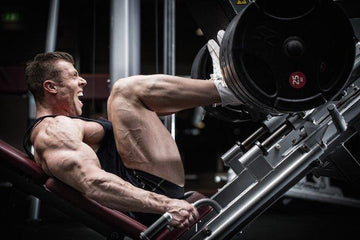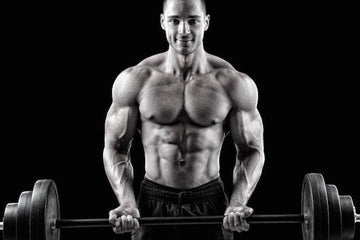

Best Leg Exercise to Increase Muscle Mass
Table of Contents
By: Robbie Durand
Most athletes will pick the leg press over the squat, but according to new research, squats create a stronger anabolic stimulus (i.e., testosterone and growth hormone) than leg presses. Researchers had 10 well-trained male strength athletes train their legs on two occasions: on one occasion doing squats and on another using the leg press. Both times the athletes did six sets of 10 reps. For each training session they used weights that were 80% of the weight at which they could just manage one rep . Blood samples were collected before, immediately after, and 15 and 30 minutes after exercise and analyzed for testosterone, growth hormone, and cortisol concentrations. The squat produced higher testosterone and GH and also cortisol levels immediately post-exercise and at 15 and 30 minutes post-exercise. Free-weight exercises appear to induce greater hormonal responses than machine-weight exercises utilizing similar lower-body multijoint movements and primary movers. The next time you go to the gym, get under the squat bar!!
 If this is not convincing enough for you to squat, here is another reason to squat. The squat rack is usually the one piece of equipment that’s never being used because it’s also one of the toughest exercises you can perform. One study looked at the metabolic demand of the bench press, squat, lat pulldown, and triceps extension performed at 80% of their one-rep max (1RM). Afterward, the scientists measured the metabolic responses of the individuals after performing the four exercises. Squatting was found to be 3.3 times more energetically demanding than either bench pressing, triceps extensions, or lat pulldowns. Squatting at 80% of a 1RM was found to expend ~9% more energy than a workout consisting of the other three exercises.
If this is not convincing enough for you to squat, here is another reason to squat. The squat rack is usually the one piece of equipment that’s never being used because it’s also one of the toughest exercises you can perform. One study looked at the metabolic demand of the bench press, squat, lat pulldown, and triceps extension performed at 80% of their one-rep max (1RM). Afterward, the scientists measured the metabolic responses of the individuals after performing the four exercises. Squatting was found to be 3.3 times more energetically demanding than either bench pressing, triceps extensions, or lat pulldowns. Squatting at 80% of a 1RM was found to expend ~9% more energy than a workout consisting of the other three exercises.
Squatting is one of the best ways to put muscle mass on the legs, as just about virtually every bodybuilder with incredible legs is a proponent of squatting. A new study published in Diabetology & Metabolic Syndrome reported that increased muscle mass in subjects’ legs was associated with lower body fat in the test subjects. Researchers evaluated visceral fat area, skeletal muscle mass, caloric intake, and energy expenditure in 67 healthy male participants. Skeletal muscle mass, especially lower-limb muscle mass, negatively contributes to visceral fat mass in healthy men. This means the more muscle mass the subjects had on their legs, the lower overall body fat. If you’re looking to burn body fat, skip the cardio and get under the squat bar.


 Shaner AA, Vingren JL, Hatfield DL, Budnar RG Jr, Duplanty AA, Hill DW. The acute hormonal response to free weight and machine weight resistance exercise. J Strength Cond Res. 2014 Apr;28(4):1032-40.
Shaner AA, Vingren JL, Hatfield DL, Budnar RG Jr, Duplanty AA, Hill DW. The acute hormonal response to free weight and machine weight resistance exercise. J Strength Cond Res. 2014 Apr;28(4):1032-40.














